291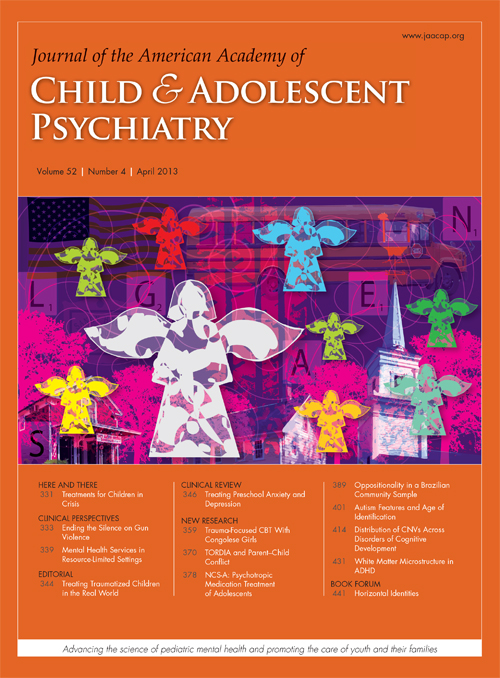
Feb 26, 2020
Blader, Joseph C. et al. Journal of the American Academy of Child & Adolescent Psychiatry, Published online February 2020
Children with Attention-Deficit/Hyperactivity Disorder (ADHD) are more prone to aggressive behaviour and the this may be treated using behavioural measures or additional medication. This randomised controlled trial demonstrates that optimisation of the child’s stimulant dose should probably be the first step, following which either low-dose antipsychotic medication ...
292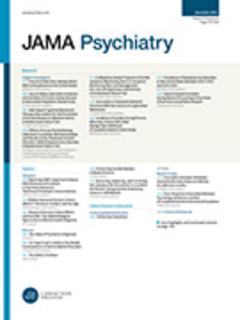
Feb 26, 2020
DeVille DC, Whalen D, Breslin FJ, et al. Prevalence and Family-Related Factors Associated With Suicidal Ideation, Suicide Attempts, and Self-injury in Children Aged 9 to 10 Years. JAMA Netw Open. 2020;3(2):e1920956. doi:10.1001/jamanetworkopen.2019.20956
In this large study of over 11,000 children from the US, rates of passive suicidal ideation (4.4%), active suicidal ideation (2.4%) and suicide attempts (1.3%) were found to be higher than expected and associated with family conflic...
293
Feb 26, 2020
Laporte, P. P., Matijasevich, A., Munhoz, T. N., Santos, I. S., Barros, A. J., Pine, D. S., ... & Salum, G. A. (2020). DOI: https://doi.org/10.1016/j.jaac.2019.12.008
Disruptive Mood Dysregulation Disorder (DMDD) is a relatively new diagnosis created within DSM 5 to describe children with significant mood dysregulation and behavioural problems (previously thought to have junior bipolar disorder). This study uses the DAWBA to identify the prevalence of DMDD in the general popula...
294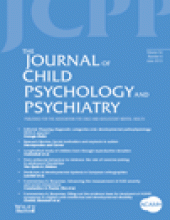
Feb 26, 2020
Odgers, C.L. and Jensen, M.R. (2020). J Child Psychol Psychiatr, 61: 336-348. doi:10.1111/jcpp.13190
Despite concerns about digital use by adolescents, this review found mixed evidence for potential harms. The authors offer some useful recommendations in the face of current evidence.
https://onlinelibrary.wiley.com/doi/full/10.1111/jcpp.13190?campaign=wolearlyview
295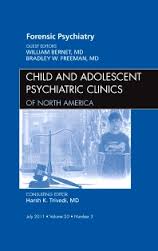
Feb 26, 2020
Pazuniak,
Markian et al.
Child
and Adolescent Psychiatric Clinics, Published online, February 2020
Although individuals with autism spectrum disorder (ASD) are prone to obsessional behaviour and interests, they are also at increased risk of developing obsessive compulsive disorder. This interesting article details how to identify the latter condition in the context of the former one.
https://www.childpsych.theclinics.com/article/S1056-4993(19)30122-1/fulltext?dgcid=raven_jbs_aip_email
296
Feb 26, 2020
Sehmi, R., Rushton, A., Pickles, A., Grant, M. and Maughan, B. (2020), Infant domestic adoption: outcomes at mid‐life. J Child Psychol Psychiatr. doi:10.1111/jcpp.13178
This review demonstrates the benefits of adoption in reducing potential rates if internalising, but not externalising mental health problems for children.
https://onlinelibrary.wiley.com/doi/abs/10.1111/jcpp.13178?campaign=wolearlyview
297
Feb 26, 2020
Pietikäinen, J.T., Kiviruusu, O., Kylliäinen, A., Pölkki, P., Saarenpää‐Heikkilä, O., Paunio, T. and Paavonen, E.J. (2020). J Child Psychol Psychiatr, 61: 195-204. doi:10.1111/jcpp.13126
Maternal depression has long been known to be associated with childhood behaviour problems. However, some researchers have argued that the statement is sexist as little research has been done with fathers. This study of maternal and paternal depression demonstrates that maternal depression is mu...
298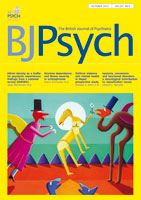
Feb 26, 2020
Dobrescu, S., Dinkler, L., Gillberg, C., Råstam, M., Gillberg, C., & Wentz, E. (2020). Anorexia nervosa: 30-year outcome. The British Journal of Psychiatry, 216(2), 97-104. doi:10.1192/bjp.2019.113
This long-term follow-up study demonstrates that 1 in 5 young people diagnosed with anorexia nervosa between 1970-1985 continued to experience some symptoms 30 years later. Given recent changes in treatment, especially early intervention, hopefully, this figure will be much lower for new...
299
Feb 26, 2020
Herle, M., Stavola, B., Hübel, C., Abdulkadir, M., Ferreira, D., Loos, R., . . . Micali, N. (2020). The British Journal of Psychiatry, 216(2), 113-119. doi:10.1192/bjp.2019.174
This longitudinal study demonstrates that there may be early clues as to who develops eating disorders in adolescence or adulthood. Children with overeating were more prone to developing binge eating disorder, girls who persistently underrate and fussy eaters of both genders were more likely to develop anorexia ...
300
Feb 26, 2020
Federico E. Vaca, Kaigang Li, Jeremy W. Luk, Ralph W. Hingson, Denise L. Haynie, Bruce G. Simons-Morton
Pediatrics Feb 2020, 145 (2) e20184095; DOI: 10.1542/peds.2018-4095
This US study demonstrates that adolescent binge drinking (in 12th grade) is a robust predictor of later risky driving, blackouts and continued binge drinking. The authors recommend that it is a focus of school-based health education.
https://pediatrics.aappublications.org/content/145/2/e20184095








